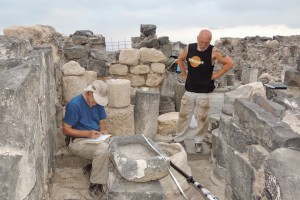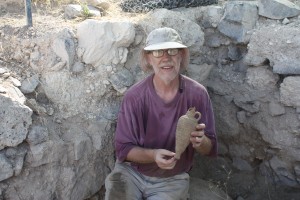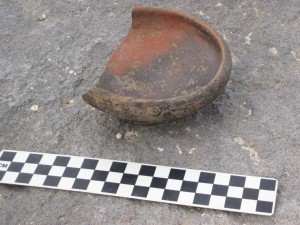Registration opens for 2015
Please follow this link to the registration page for the 2015 season. Join us this season!
Please follow this link to the registration page for the 2015 season. Join us this season!
The November/December 2014 issue of Biblical Archaeology Review includes an article on the Hippos Excavation and the recent publication of Hippos-Sussita of the Decapolis. The article focusses on the House of Tyche, including good photos of the Tyche fresco and an inscription from the entrance hall.
The dates for the summer 2015 excavation at Hippos of the Decapolis are:
19 July to 13 August 2015
We are planning an optional tour of Jerusalem for three days before the dig.
The dig will be based at Sha’ar HaGolan, some twenty km south of Hippos.
More detail to follow.
Using photos from the 2014 season and a technique call photogrammetry, Jackie Wiebold has constructed a 3D model of the small room built over the remains of the southeast corner of the House of Tyche. Work on that room was completed this summer. Join the excavation (virtually) and explore the area for yourself!
Although Concordia did not send a team for the 2014 season, Dr. Mark Schuler and area supervisor Darryl Schmidt did spend the first week of July at Sussita doing maintenance on the Northeast Insula.

“Maintenance” means pulling weeds, removing small areas of tumble, and recovering mosaic floor exposed over the winter. In addition, Schuler and Schmidt completed work from the previous season. They exposed the rest of a small and late room built over the remains of the southeast corner of the House of Tyche. Next to the bench in the corner, they recovered a nearly intact Roman juglet, the form of which resembled a small amphora, only with one handle.

Two additional projects completed the week. A small probe was dug to bedrock in the sleeping chamber east of the apse of the Northeast Church. There Darryl recovered a fine Hellenistic drinking bowl.

We also documented the cistern in the paved plaza between the Alpha and Beta buildings using a laser. The cistern is bell shaped and about 4.5 m deep.
See the report for 2014 for full detail.